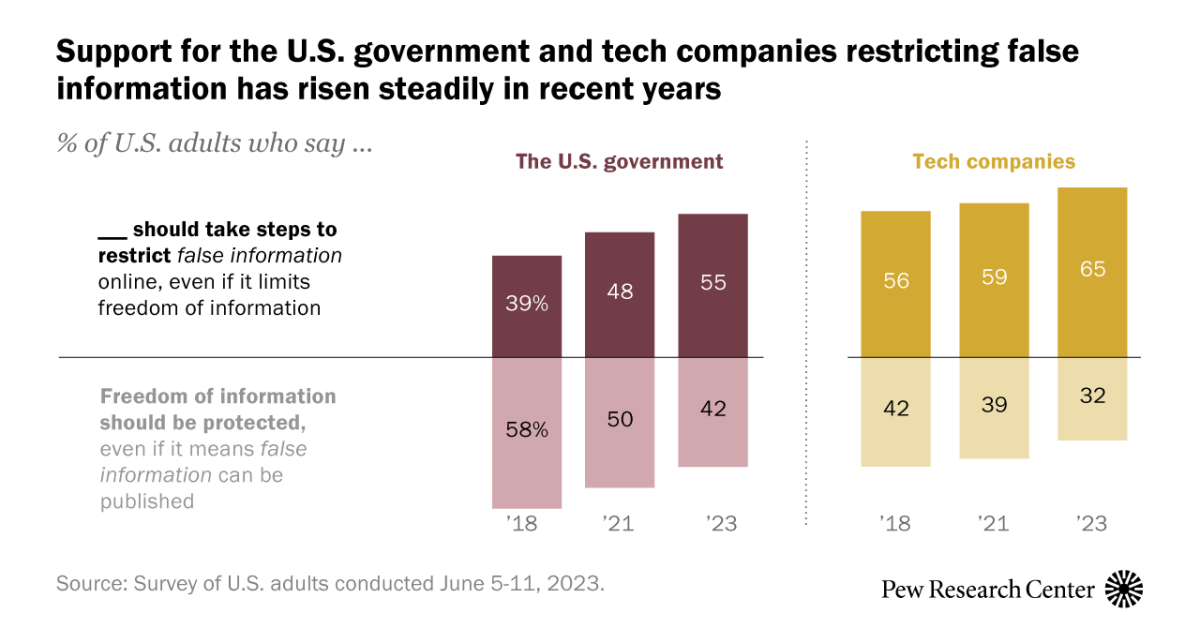65% of Americans support tech companies moderating false information online and 55% support the U.S. government taking these steps. These shares have increased since 2018. Americans are even more supportive of tech companies (71%) and the U.S. government (60%) restricting extremely violent content online.



Checks out. I wouldn’t want the US government doing it, but deplatforming bullshit is the correct approach. It takes more effort to reject a belief than to accept it and if the topic is unimportant to the person reading about it, then they’re more apt to fall victim to misinformation.
Additionally, repeated exposure to a statement increases the likelihood that it will be accepted as true.
Even providing corrections next to misinformation leads to the misinformation spreading.
The ideal solution is to cut off the flow of misinformation and reinforce the facts instead.